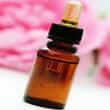Background
- American pawpaw (Asimina triloba) is a fruiting tree native to North America. However, plantings of the tree can be found in Asia, Australia, and Europe. Pawpaw extract is made from the twigs of the tree.
- In the 1980s and 1990s, researchers at Purdue University isolated compounds from pawpaw bark extracts. Many of these compounds were found to have cytotoxic effects on cancer cell lines. Currently, there is a lack of available scientific evidence supporting the safety or effectiveness of pawpaw for any condition.
References
Natural Standard developed the above evidence-based information based on a thorough systematic review of the available scientific articles. For comprehensive information about alternative and complementary therapies on the professional level, go to . Selected references are listed below.
- Alali FQ, Liu XX, McLaughlin JL. Annonaceous acetogenins: recent progress. J Nat Prod 1999;62(3):504-540.
View Abstract - Caparros-Lefebvre D, Elbaz A. Possible relation of atypical parkinsonism in the French West Indies with consumption of tropical plants: a case-control study. Caribbean Parkinsonism Study Group. Lancet 7-24-1999;354(9175):281-286.
View Abstract - Haribal M, Feeny P. Combined roles of contact stimulant and deterrents in assessment of host-plant quality by ovipositing zebra swallowtail butterflies. J Chem Ecol. 2003;29(3):653-670.
View Abstract - He K, Zhao GX, Shi G, et al. Additional bioactive annonaceous acetogenins from Asimina triloba (Annonaceae). Bioorg.Med.Chem. 1997;5(3):501-506.
View Abstract - Kim EJ, Suh KM, Kim DH, et al. Asimitrin and 4-hydroxytrilobin, new bioactive annonaceous acetogenins from the seeds of Asimina triloba possessing a bis-tetrahydrofuran ring. J Nat Prod 2005;68(2):194-197.
View Abstract - Martin JM, Madigosky SR, Gu ZM, et al. Chemical defense in the zebra swallowtail butterfly, Eurytides marcellus, involving annonaceous acetogenins. J Nat Prod 1999;62(1):2-4.
View Abstract - McCage CM, Ward SM, Paling CA, et al. Development of a paw paw herbal shampoo for the removal of head lice. Phytomedicine 2002;9(8):743-748.
View Abstract - McLaughlin, JL. A novel mechanism for the control of clinical cancer: inhibition of the production of adenosine triphosphate (ATP) with a standardized extract of paw paw (Asimina triloba, Annonaceae) (Unpublished). 2001.
- McLaughlin JL, Zeng L, Oberlies NH, et al. Annonaceous acetogenins as new natural pesticide: Recent progress In: Phytochemicals for pest control. 1997;119-133.
- Woo MH, Cho KY, Zhang Y, et al. Asimilobin and cis- and trans-murisolinones, novel bioactive Annonaceous acetogenins from the seeds of Asimina triloba. J.Nat.Prod. 1995;58(10):1533-1542.
View Abstract - Woo MH, Chung SO, Kim DH. Asitrilobins C and D: two new cytotoxic mono-tetrahydrofuran annonaceous acetogenins from Asimina triloba seeds. Bioorg.Med.Chem. 2000;8(1):285-290.
View Abstract - Woo MH, Kim DH, McLaughlin JL. Asitrilobins A and B: cytotoxic mono-THF annonaceous acetogenins from the seeds of Asimina triloba. Phytochemistry 1999;50(6):1033-1040.
View Abstract - Wood R, Peterson S. Lipids of the pawpaw fruit: Asimina triloba. Lipids 1999;34(10):1099-1106.
View Abstract - Ye Q, He K, Oberlies NH, Zeng L, et al. Longimicins A-D: novel bioactive acetogenins from Asimina longifolia (annonaceae) and structure-activity relationships of asimicin type of annonaceous acetogenins. J Med Chem 4-26-1996;39(9):1790-1796.
View Abstract - Zhao GX, Chao JF, Zeng L, et al. The absolute configuration of adjacent bis-THF acetogenins and asiminocin, a novel highly potent asimicin isomer from Asimina triloba. Bioorg.Med.Chem. 1996;4(1):25-32.
View Abstract







